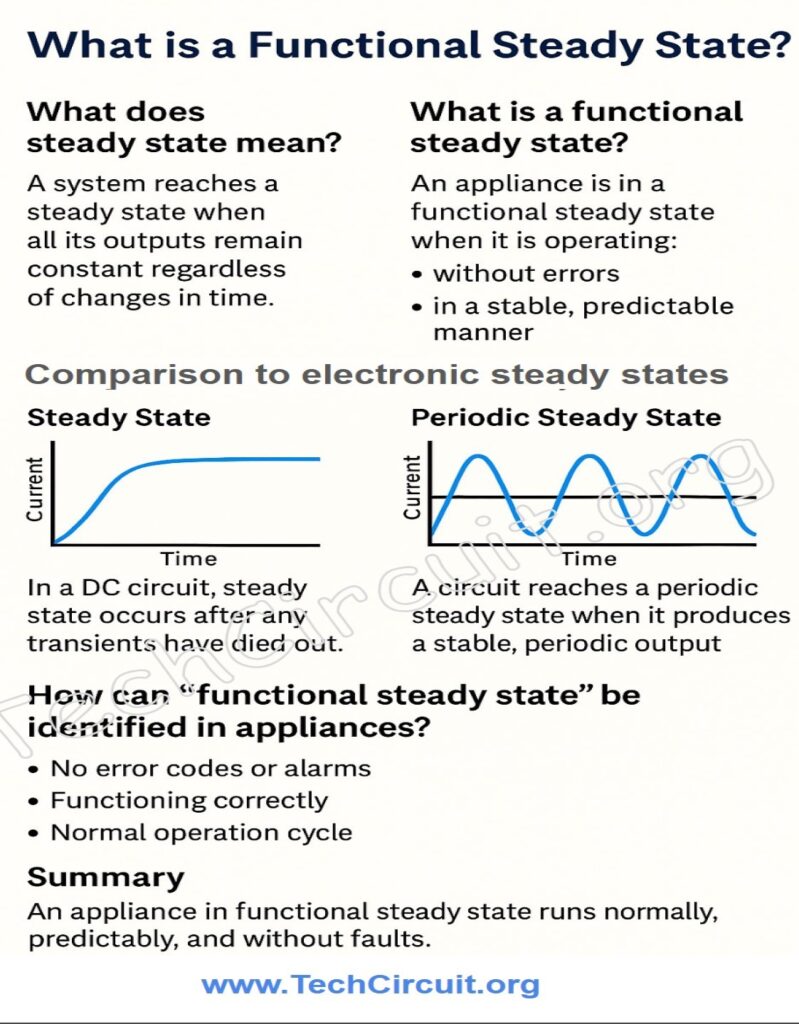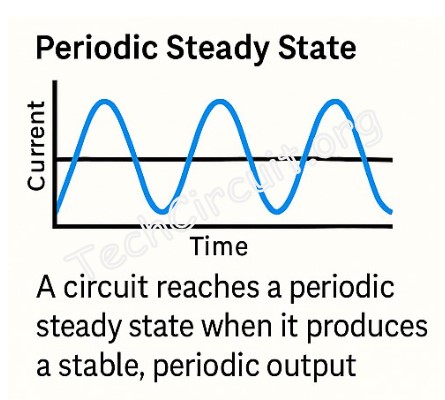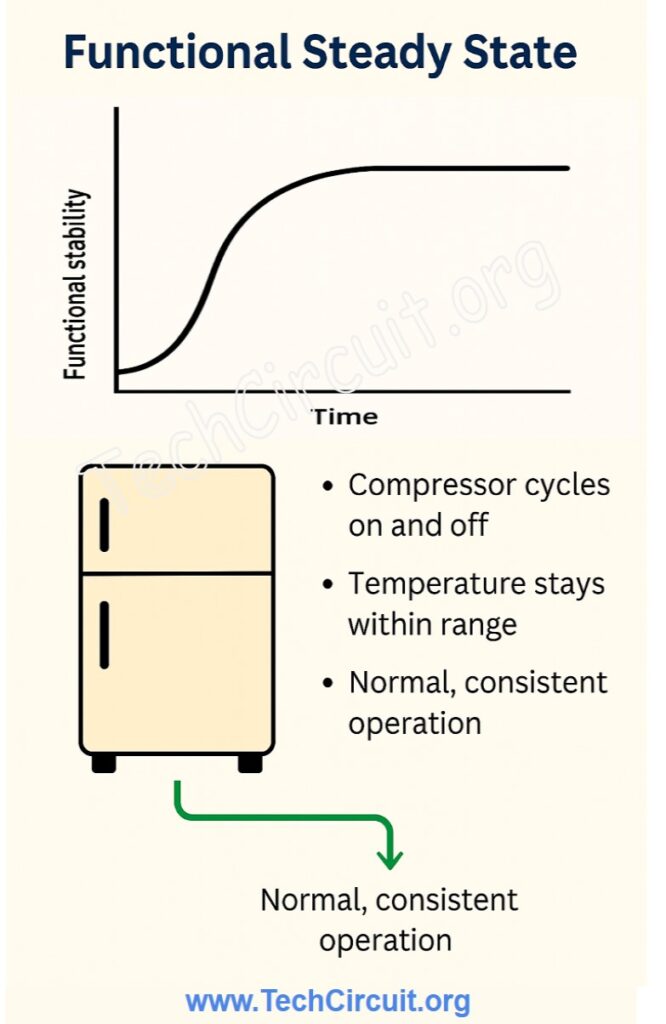
What does steady state mean?
A system is said to be in steady state when its outputs no longer change over time, even though the system is still active. For example, in an electrical circuit, once all voltages and currents stabilize after startup or input changes, the system is considered to be in steady state.
Steady state is what happens after all the noise and surges settle down—a calm, predictable behavior that can be measured and trusted.
What is a functional steady state?
A functional steady state, also known as steady state operation, describes the point at which an appliance is:
- Running as intended,
- Without errors or irregularities,
- In a consistent, predictable operating cycle.
This doesn’t mean everything is “off” or static—but rather that everything is working correctly, with no transients, malfunctions, or unexpected behavior.
For example:
- A refrigerator compressor cycling on/off around target temperatures.
- A washing machine smoothly completing rinse and spin cycles.
- An HVAC system holding temperature while maintaining airflow.
Comparison to Electronic Steady States
To understand this better, let’s compare it to familiar electronic concepts:
1. DC Steady State (Graph: Rising to Flat Line)
In a simple DC circuit, when a capacitor charges, the voltage across it rises quickly, then levels off. Once it stops changing, the circuit has reached DC steady state. No more current flows through the capacitor, and everything is predictable.

2. Periodic Steady State (Graph: Repeating Waves)
Some circuits, like oscillators or AC power systems, reach a periodic steady state, where the output waveform repeats consistently over time. Even though the values vary (up and down), the pattern is stable—and that’s the key.
Likewise, appliances can exhibit periodic operation (e.g., compressor cycles or heating elements pulsing) but still be in a functional steady state because the cycle is expected and consistent.

How can “functional steady state” be identified in appliances?

Here are a few practical signs:
✅ No fault codes or error beeps
✅ The unit performs its normal job (heating, spinning, cooling, etc.)
✅ Cycles repeat with expected timing
✅ No unusual noises, power fluctuations, or restarts
✅ Inputs (power, water, etc.) remain constant
A trained tech often knows at a glance—or by ear—whether an appliance has “settled in” or is misbehaving.
Test your Knowledge
Appliances and the Functional Steady State
Select the best answer for each question.
Summary
A functional steady state is the “all clear” sign in diagnostics. It’s the point where an appliance runs reliably, behaves predictably, and gives no reason for concern. Just like a stabilized electronic circuit, a functional appliance at steady state reflects normalcy, health, and readiness for use.
Understanding this concept can help appliance technicians:
- Recognize when an issue is truly resolved,
- Know when it’s safe to leave a job site,
- And better explain appliance behavior to customers.
Don’t forget:
“Diverting 10 min/day of social media time towards learning something new, is 5 hours of newfound monthly knowledge.” – SM
To DONATE to the Tech Circuit – CLICK HERE
Alphabetical Links to all Tech Circuit Articles and Blogs – CLICK HERE
Links to all Tech Circuit Cheat Sheets/Field References for Appliance/HVAC Techs – CLICK HERE
For additional electrical and electronics learning material for field techs, visit the following links:
Homepage at http://www.TechCircuit.org
Facebook group at: https://www.facebook.com/groups/746823709133603
Youtube Channel: https://www.youtube.com/@TheTechCircuit
We are a participant in the Amazon Services LLC Associates Program, an affiliate advertising program designed to provide a means for us to earn fees by linking to Amazon.com and affiliated sites.
